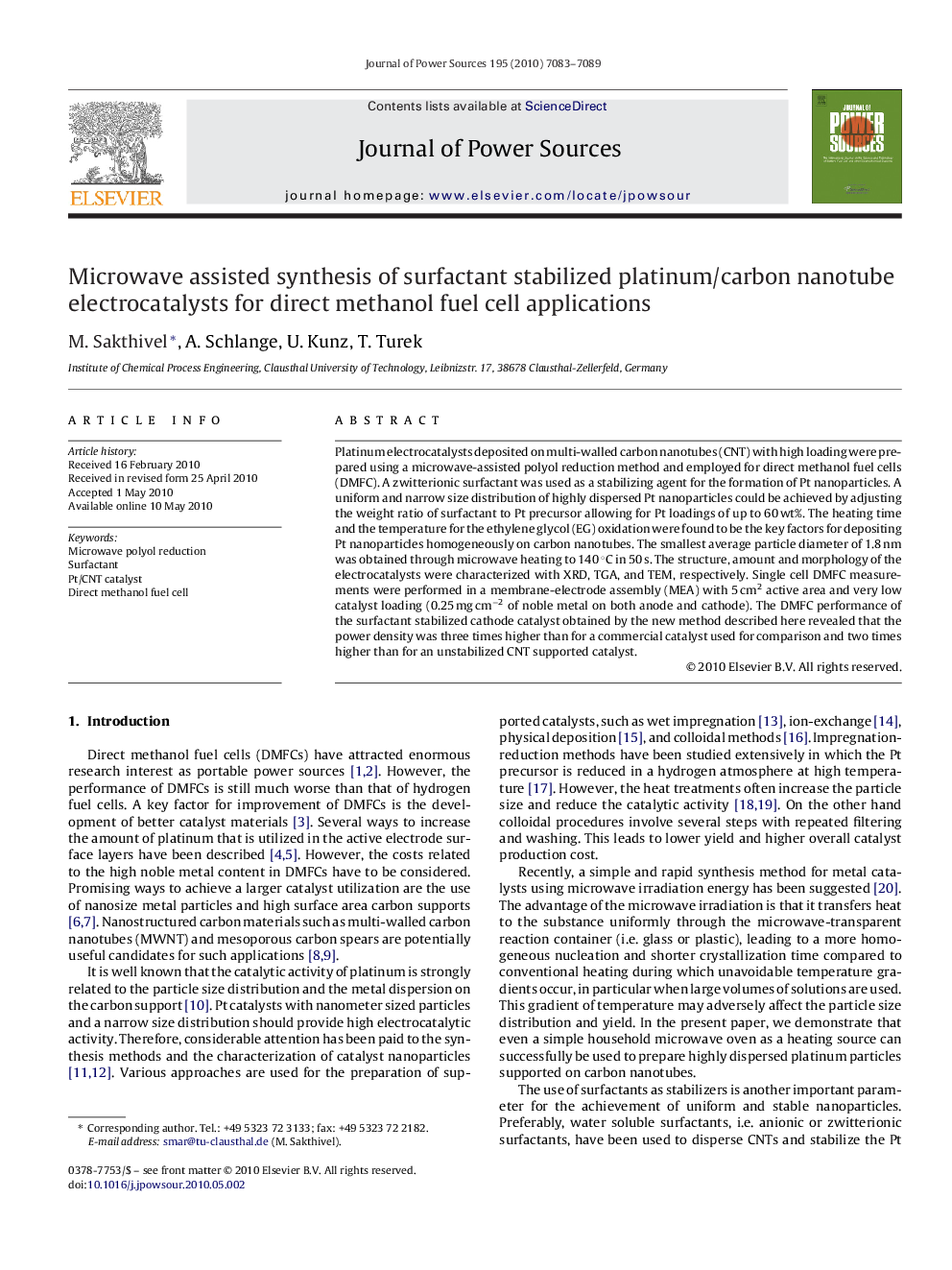| Article ID | Journal | Published Year | Pages | File Type |
|---|---|---|---|---|
| 1289219 | Journal of Power Sources | 2010 | 7 Pages |
Platinum electrocatalysts deposited on multi-walled carbon nanotubes (CNT) with high loading were prepared using a microwave-assisted polyol reduction method and employed for direct methanol fuel cells (DMFC). A zwitterionic surfactant was used as a stabilizing agent for the formation of Pt nanoparticles. A uniform and narrow size distribution of highly dispersed Pt nanoparticles could be achieved by adjusting the weight ratio of surfactant to Pt precursor allowing for Pt loadings of up to 60 wt%. The heating time and the temperature for the ethylene glycol (EG) oxidation were found to be the key factors for depositing Pt nanoparticles homogeneously on carbon nanotubes. The smallest average particle diameter of 1.8 nm was obtained through microwave heating to 140 °C in 50 s. The structure, amount and morphology of the electrocatalysts were characterized with XRD, TGA, and TEM, respectively. Single cell DMFC measurements were performed in a membrane-electrode assembly (MEA) with 5 cm2 active area and very low catalyst loading (0.25 mg cm−2 of noble metal on both anode and cathode). The DMFC performance of the surfactant stabilized cathode catalyst obtained by the new method described here revealed that the power density was three times higher than for a commercial catalyst used for comparison and two times higher than for an unstabilized CNT supported catalyst.
